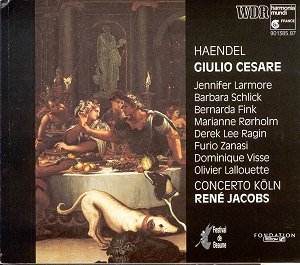 Composer: Alfred Schnittke
Composer: Alfred Schnittke
Works: Cello Concerto No. 1, Cello Concerto No. 2, Dialogue for Cello and Seven Instruments
Performers: Natalia Gutman, cello; USSR Radio and TV Symphony Orchestra conducted by Kyril Kondrashin (Concerto No. 1); Moscow State Philharmonic Orchestra conducted by Dmitri Kitajenko (Concerto No. 2); Gnessin Chamber Orchestra conducted by Yuri Nikolaevsky (Schnittke)
Recording: Recorded 21 June 1976; 11 November 1986; and 2 January 1982
Label: Live Classics LCL 202
Alfred Schnittke’s music occupies a unique space within the 20th-century canon, often reflecting a profound dialogue between the classical tradition and contemporary sensibilities. His Cello Concertos and the chamber work “Dialogue for Cello and Seven Instruments” embody this duality, balancing the emotional weight of Shostakovich with the fragmented textures characteristic of postmodernism. Natalia Gutman’s interpretations of these works, captured in this Live Classics release, offer both historical resonance and fresh insights.
Gutman’s performances of Shostakovich’s Cello Concertos are particularly significant, as they were recorded in the crucible of Soviet musical life. The 1976 recording of the First Concerto reveals a striking intimacy; the flattened soundstage can feel unflattering at times, yet it allows Gutman’s nuanced approach to shine through. Her sound, while not as physically imposing as that of contemporaries like Mstislav Rostropovich, is marked by a clarity of articulation and an emotional reserve that invites deep engagement. This interpretative choice, while perhaps lacking the overt drama found in Heinrich Schiff’s celebrated performances, establishes a compelling narrative architecture that is uniquely Gutman. For example, in the haunting coda of the first movement, her playing conveys a delicate sense of melancholy, evoking the introspective qualities that permeate much of Shostakovich’s oeuvre.
The Second Cello Concerto, recorded a decade later, benefits from a more robust engineering approach and a clearer sonic perspective. Dmitri Kitajenko’s direction brings out the orchestral textures with greater aplomb, particularly in the second movement’s Allegretto, where the horns’ biting interjections are expertly balanced against Gutman’s lyrical lines. Here, her interpretation is marked by a keen sense of proportion and a thoughtful pacing that allows the music’s darker elements to resonate fully. The cadenza, with its stark contrasts between introspection and a more aggressive dialogue, showcases her ability to navigate the emotional landscape of the work without resorting to sentimentality.
Schnittke’s “Dialogue” serves as a fascinating counterpart to the Shostakovich concertos, its intricate interplay between the solo cello and chamber ensemble providing a modern lens through which to view the emotional complexities present in the preceding works. Under the baton of Yuri Nikolaevsky, the Gnessin Chamber Orchestra contributes to a performance that oscillates between moments of intimate introspection and more raucous interjections, capturing the essence of Schnittke’s style. Gutman’s performance here is marked by a fluidity that contrasts sharply with the more fragmented textures of the ensemble, effectively bridging the gaps between chaos and resolution.
This collection stands out not merely for its historical significance but for Gutman’s ability to embody the spirit of both composers she interprets. Her artistry channels the emotional depth of Shostakovich while navigating Schnittke’s more avant-garde idioms with remarkable dexterity. The engineering quality, while variable, ultimately enhances the listening experience, foregrounding the subtleties of her playing without overwhelming it with excessive reverberation.
this recording serves as a valuable addition to the discography of both Schnittke and Shostakovich. Natalia Gutman’s interpretations are not only respectful of the composers’ legacies but also imbued with a personal touch that elevates them above mere documentation. The balance of technical skill and emotional insight in her performances makes this album a compelling journey through two distinct yet intertwined musical worlds, affirming Gutman’s stature as a leading interpreter of this repertoire.



